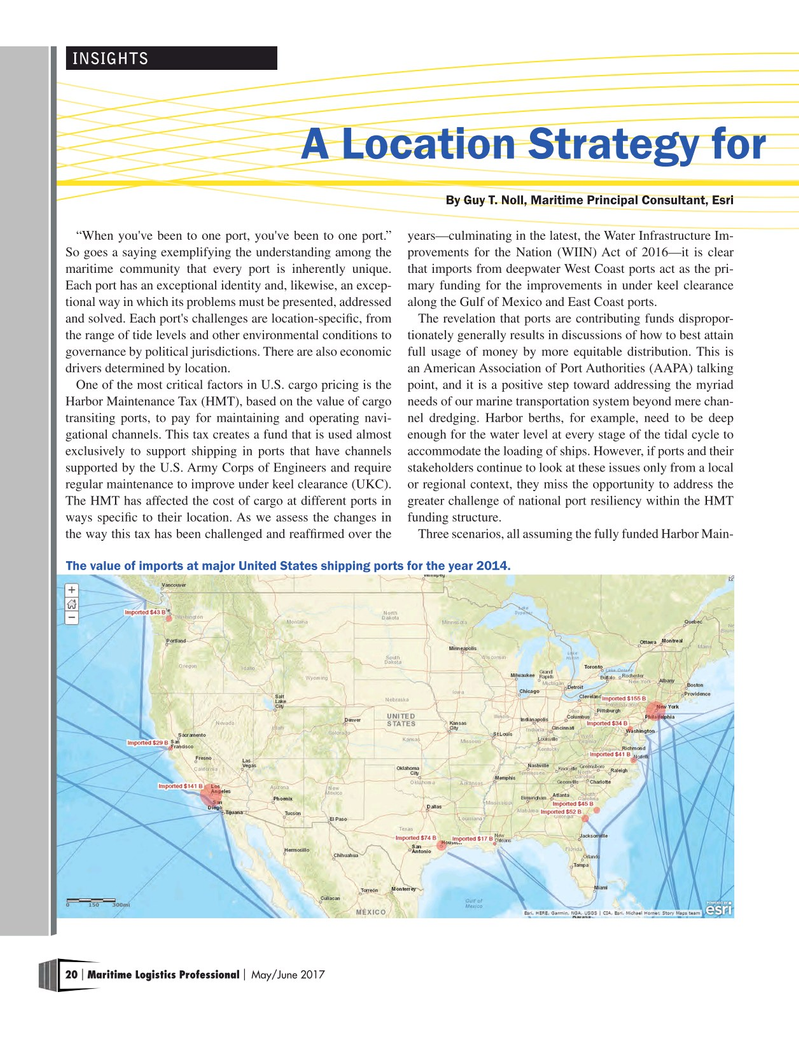
Page 20: of Maritime Logistics Professional Magazine (May/Jun 2017)
BUNKER OPERATIONS & PORTS
Read this page in Pdf, Flash or Html5 edition of May/Jun 2017 Maritime Logistics Professional Magazine
INSIGHTS
A Location Strategy for
By Guy T. Noll, Maritime Principal Consultant, Esri “When you've been to one port, you've been to one port.” years—culminating in the latest, the Water Infrastructure Im-
So goes a saying exemplifying the understanding among the provements for the Nation (WIIN) Act of 2016—it is clear maritime community that every port is inherently unique. that imports from deepwater West Coast ports act as the pri-
Each port has an exceptional identity and, likewise, an excep- mary funding for the improvements in under keel clearance tional way in which its problems must be presented, addressed along the Gulf of Mexico and East Coast ports. and solved. Each port's challenges are location-specifc, from The revelation that ports are contributing funds dispropor- the range of tide levels and other environmental conditions to tionately generally results in discussions of how to best attain governance by political jurisdictions. There are also economic full usage of money by more equitable distribution. This is drivers determined by location. an American Association of Port Authorities (AAPA) talking
One of the most critical factors in U.S. cargo pricing is the point, and it is a positive step toward addressing the myriad
Harbor Maintenance Tax (HMT), based on the value of cargo needs of our marine transportation system beyond mere chan- transiting ports, to pay for maintaining and operating navi- nel dredging. Harbor berths, for example, need to be deep gational channels. This tax creates a fund that is used almost enough for the water level at every stage of the tidal cycle to exclusively to support shipping in ports that have channels accommodate the loading of ships. However, if ports and their supported by the U.S. Army Corps of Engineers and require stakeholders continue to look at these issues only from a local regular maintenance to improve under keel clearance (UKC). or regional context, they miss the opportunity to address the
The HMT has affected the cost of cargo at different ports in greater challenge of national port resiliency within the HMT ways specifc to their location. As we assess the changes in funding structure. the way this tax has been challenged and reaffrmed over the Three scenarios, all assuming the fully funded Harbor Main-
The value of imports at major United States shipping ports for the year 2014.
20 Maritime Logistics Professional May/June 2017 | |

 19
19

 21
21
